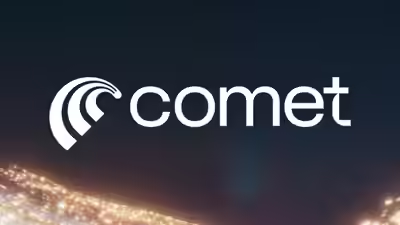
In the rapidly evolving digital marketing landscape, the launch of the Comet Browser by Perplexity AI marks a meaningful shift in how users browse, search and interact with content. For a digital marketing agency like Picasso Multimedia, it’s not just another browser—it signals new opportunities and challenges for brand-visibility, user journey design and campaign measurement.
What Is Comet Browser?
Perplexity AI, a startup known for its AI “answer-engine” style search, has introduced its own web browser built on the Chromium engine. Named Comet, this browser sets Perplexity’s AI search as the default, and embeds a built-in AI assistant that can summarise web pages, perform tasks and essentially co-browse with the user.
Key features include:
- Seamless import of bookmarks/extensions from Chrome/Edge.
- AI assistant sidebar that can answer questions about the current page, automate tasks (like emails or scheduling) and refine browsing workflows.
- A subscription-based early model (US $200/month initially) with power-user access before broader availability.
Why It Matters for Digital Marketing
When a browser puts AI and automation at its core, the traditional digital marketing playbook needs an update. Here’s what agencies like Picasso Multimedia are considering:
1. Search & Discovery Changing
With Comet, instead of standard search engine results pages (SERPs), users may receive AI-summarised answers, fewer click-throughs, and less direct traffic to brand sites. Brands must optimise for intent, context, and conversational queries, not just keywords.
2. New Entry Points for Content
A user may ask the Comet assistant: “Show me the best budget smartphone under ₹20,000” and receive a card summary with selected brand links. This shifts how content must be structured: quick, authoritative, and structured for AI assistants.
3. User Journey Redefined
The assistant may automate later steps: bookmark, compare, even buy. Brands need to consider the entire journey – not just landing page → conversion, but how the AI-browser collaborates with the user. Picasso Multimedia emphasises designing for the “AI co-browser” role in the funnel.
4. Measurement Models Need Updating
Metrics like impressions, clicks and bounce rates may become less relevant. How long did the user stay on an AI-generated summary? Did the user ask follow-up questions? Agencies must evolve analytics to capture AI-driven behaviours.
What Marketers Should Do Now
To stay ahead, here are actionable steps your digital marketing team should take (and which Picasso Multimedia is implementing for clients):
a) Optimise Content for AI-Assisted Browsing
- Create succinct, authoritative answers to common questions.
- Use schema markup, FAQs and structured data so AI assistants can extract and present information easily.
- Focus on user intent rather than only keywords.
b) Align Brand Experience with the AI Browser Flow
- Ensure your website is mobile- and browser-ready (since many AI-browsers will run on desktops and mobile).
- Consider how your site appears when summarised by an AI.
- Use interactive elements or micro-actions that can be triggered by browser assistant prompts.
c) Prepare for Shift in Traffic Patterns
- Monitor where traffic comes from — if AI browsers reduce direct click-throughs, look for new signals (voice commands, sidebar actions, linked tasks).
- Build brand awareness outside of traditional ad placements — emphasise brand authority, reputation, and associations that an AI assistant might rely on to display your brand.
d) Work With Agencies That Understand the Shift
As the browsing world changes, working with a digital marketing partner who is monitoring AI-browser trends becomes critical. At Picasso Multimedia, we integrate future-proof strategies, review browser changes and adjust content/distribution plans accordingly.
Challenges & Considerations
While Comet and similar AI browsers open new horizons, some risk areas must be handled:
- Adoption speed & audience reach: Comet is still emerging and may take time to gain mass market share.
- Privacy & data governance: AI assistants that read page contexts may raise user trust and privacy concerns.
- Reliability of AI summaries: Brands must ensure that whichever content is pulled into the AI browser summary is accurate, up-to-date and avoids mis-representation.
- Browser dependency & vendor lock-in: With any new platform shift, brands must avoid being overly dependent on one browser or ecosystem.
Looking Ahead: What This Implies for 2026 & Beyond
The launch of the Comet browser signals a transition from browsing via a browser to browsing with a browser. User interactions become more conversational, assistant-led, and context-aware. For digital marketing:
- Prepare for zero-click journeys where the assistant gives the result directly without a brand site visit.
- Emphasise brand signals, trust, authority, and structured data so your brand appears favourably in AI-driven responses.
- Experiment with browser-assistant integrations — branded prompts, extensions or partnerships that embed your brand in the AI browsing workflow.
At Picasso Multimedia, our teams are already exploring how to integrate brand presence in AI browser assistants, restructure funnels for assistant-led journeys and adapt measurement frameworks to this new terrain.
Conclusion
The arrival of Perplexity AI’s Comet browser marks a critical inflection point in how we think about digital marketing: the browser is no longer just a doorway, it’s becoming a smart collaborator. Brands and marketers must adapt to a world where AI-driven browsers take action, summarise content, and guide user behaviour.
For agencies like Picasso Multimedia, the message is clear: evolve your strategy now — optimise for AI-assisted browsing, rethink content and user journeys, and build for trust and authority in a world where the browser itself is becoming the marketer’s assistant.

